#revivalist
Text
ok now frank go next bring this shit back you little twink

#frank iero#my chemical romance#revivalist#everyone else should dress in normal dad attire except him in this next show
267 notes
·
View notes
Text
Mesopotamian Equinox Festivals: Akiti/Akitu(m)
𒀉𒆠𒋾
The source for this post is The Cultic Calendars of the Ancient Near East by Mark Cohen (Link) Its sprinkled throughout the book but there is allso a dedicated chapter starting at page 400.
Akiti is the Sumerian word for this festival while Akitu(m) is the Akkadian word. (Link)
⭐️ I wrote this so even if you only worship one Mesopotamian God it might be helpful
🌷 History 🍁
The original Akiti festival developed at Ur. They took place within the first and seventh months of the year. Months began on the first visible crescent following the new moon. The Akiti festival would coincide with the month that followed spring and fall equinox(s) meaning the first waxing moon after each equinox. For Ur this was month 1 and month 7.
It would begin at the 1st and go through the 5th (or 7th) of the month in the spring. In the fall it goes through the 1st to the 11th of the month.
It celebrated the triumphant return of Nanna, the city's primary patron God, to the city he claimed and symbolized all the activities he would do as a ruler to put his city in order. The proper preformance of this festival would assure that the God put society in order and establishes a good fate for the city and its inhabitants.
The waxing moon at the beginning of the month had two symbols first the shape of the moon signified the shape of the boat Nanna was returning in, second as the moon fills more and more Nanna is literally physically returning.
The Akiti festival was exported and in many places became associated with the return of their city's God. But when exported the date changed depending on location and sometimes it was incorporated into local festivals.
The ancient festival survived for over 2000 years. The earliest mention being in the middle of the third millennium BCE (3000-2001 BCE) to at least 689 BCE but was apparently also recorded during the Seleucid period which conquered Babylon in 331 BCE.
⭐️ It has also been revived by the ethnic Assyrian people during the 20th century to celebrate their New Year starting on April 1st (Info: link)
It was very important to say the least. And it seems during ancient times the underlying premise stayed the same: the triumph of a city or empire's main God and the securing of good fate and blessings for the next half year.
A common aspect was the God (idol) physically dwelling in an "Akiti house" that was usually built outside the city and then the God returning to their temple. The priests would make sure proper normal offerings and rites are preformed at the Akiti house. Both parts included a procession, with the return procession being more opulent.
🌷Today 🍁
So. How on earth does one celebrate this in the 3rd millennium CE?
A few ideas:
🔹 Maintain the oldest, "original", tradition. A celebration of Nanna being triumphant and organizing society.
However, that was very Ur center and didn't necessarily equate with anywhere else in Sumer. The festival was transferred to Nippur, the Sumerian city with the greatest religious significance as the city if Enlil.
🔹Celebrate the Nippur festival because of its Sumerian religious importance
Which took place during the 4th and 12th month breaking it away from any equinox associations. It was then incorporated into pre-existing Nippur festival in Šunumun based on the "Disputation of the Plow and the Hoe (Link)" & Šekinku's celebration of the Barley Harvest. Nippur also has the best calendar to reconstruct from as it survived in later calendars, so some Sumerian polytheist groups stick to this calendar.
🔹Celebrate Another City's festival
Many cities had them, I haven't read the full book there are a ton.
For example:
--Uruk Festival
Which took place at least during the 8th month to Anu, who is the highest God his name meaning Heaven and the divine marker.
--Badtibara Festival
Took place during the 7th month to Dumuzid in conjunction with "Elūlu celebration"
🔹Celebrate the festival as triumphant of the Gods of Earth rather than any city.
To adapt it to 21st century CE and a globally connected world. This could be An as the highest God, bestower of kingship, heaven; Enlil King of the Gods; or Enki as the world order-er, as commissioned by Enlil, in one myth. It probably depends on which time period you take from and whom you consider King or the highest God in relation to all of Earth.
🔹Other personalized form. Rest of post to help figure that out.
🌷 Aspects Of Festival 🍁
🔸Festival meaning itself:
Key ancient aspects:
A high ranking God "returning" (historically to their tutelary city)
Gratitude to the God for their presence, protection, and good will in the past half year.
Securing good prosperity and fate by the proper celebration of that deity for the next half year.
Some modern concepts you might apply:
Return in their "sphere of influence." Enki as fresh water. Nisaba as grain/food. Utu as justice/judicial process / the sun. So on.
Return in a worshiper's life.
Return in a worshiper's home.
Celebration of a God establishing order, prosperity and/or protection.
🔸Timing:
🌒 The date in the lunisolar calendar is fixed by the day directly following the New Moon that you can easily determine via internet. In ancient history you'd wait to physically see the new crescent but I can't exactly do that.
In blue I give the 2024 dates to show the myriad of range possibilities both spring and fall.
1st & 7th month of ancient Ur calendar
April 9, 2024 — 1 Šekinku, Ur Lunisolar
October 3, 2024 — 1 Akiti, Ur Lunisolar
4th & 12th month of ancient Nippur calendar
July 6, 2024 — 1 Šunumun, Nippur Lunisolar
January 30, 2025 — 1 Šekinku, Nippur Lunisolar
Spring & Fall equinox — Solar only. Modern idea.
March 19, 2024
September 22, 2024
1st of the Gregorian month the equinox occurs in. Combines the civic month + equinox idea to the modern Gregorian calendar.
March 1, 2024
September 1, 2024
First waxing moon crescent in the Gregorian month of the equinox. Combines the civic month + lunar aspect and equinox, to the modern Gregorian calendar.
March 11, 2024
September 3, 2024
🔸Length of festival:
5-7 days in Spring & 11 days in Fall — Reconstructionist
1-2 days — to allow for two processions.
1 day
🔸Which God:
I've included their primary ancient cities
Nanna, Original festival | Ur
An, Highest God Heaven | Uruk
Enlil, King of the Gods | Nippur
Enki, Order of Society specifically from the myth "Enki & the World Order (Link)" where Enlil commissions him to do so | Eridu
Marduk, Babylonian Empire's Akitu festival | Babylonia
Aššur, Assyrian Empire's Akitu festival | Aššur
[City/Empire God], if you reconstruct from a specific different Mesopotamia city or empire. Particularly if the God is exalted as establishing order in the city or empire. For example: Ninisina in Isin, Ninurta in Girsu— but these don't necessarily have historical associated Akitu festivals that are documented.
[God of your choice] while this removes it from its historical foundation it may make the celebration more applicable to your life. If you are a Mesopotamian polytheist or pagan I highly encourage you to pick one of the high Gods of the pantheon. But I thought I'd put this out there— especially for eclectics or non-Mesopotamian polytheists/pagans who want to worship a specific Mesopotamian God (Diĝir) in a symbolically proper way.
Additional Gods:
Gods in that God's retinue
Gods in the main God's family
Gods from the temple the idol was taken from and/or temples involved in the festival of that city (for example in Ur it was celebrated across 3 temples)
None
🔸Offerings:
Offerings based on the ancient lists given specifically for the festival. This might be significantly impossible but instead of slaughtering a sheep or a cow you could replace it with a serving of lamb or beef.
Historically accurate offerings. Can be Sumerian based or local based. (Link.)
Offerings of seasonal themed foods especially those local to your area— spring & fall.
Low Spoon / No Spoon libations (Link)
🌷Ritual & Activities🍁
Haven't wrote any detailed ritual but this is what I have mostly for 2 day or 1 day participation. [Note from 2024: I don't have the energy to create a revivalist style 5-7 day festival this year. Some can be found elsewhere online by other revivalist/reconstructionist groups]
🌼Ritual
▪️You could attempt to take the ritual instructions we have from other ancient cities that wrote about the Akiti/Akitu festivals. I have not read enough of of the book for that. But you can read the chapter starting at page 400 of the book linked at the beginning of this post for ideas.
▪️The basic ideas of ancient practice:
Finding a spot to place main God's representation away from their shrine/altar. This is the Akiti house.
Procession of main God's representation to that spot from their normal shrine/altar
There was lamentation & signs of grief about the absence of the God while they dwell 'away from their city'. The idol was so important in Mesopotamian practice that its absence could be the literal absence of the God, hence why idols were often stolen during war (Source Link). Thus when the representation is in the Akiti house you may express your sadness at the deity's absence.
Letting the main God's representation dwell there for a time, maybe an hour or overnight or a few days depending on length of festival. Libations and offerings are still given to the God at this location.
Procession back to altar after spending time in the Akiti house. A very joyous experience.
Offerings to the newly arrived deity and any additional deities. Also libations if you want.
Prayer of praise and of gratitude for their arrival.
Prayers of supplication for prosperity and protection.
Music, dance, poetry, hymns, reading a story, presenting art— anything that would entertain the God.
▪️Much shorter version:
Have the God representation on altar.
Take and walk around the room or your home to represent them "leaving."
Pause half way through the walk.
When paused proclaim that you miss the God.
Then walk back returning the representation to the altar
Proclaim your gratitude for the God returning to their altar.
Prayers of gratitude for their protection, their role, their meaning, etc. Prayers of supplication if you wish.
Small offering and/or libation.
▪️Hidden / In the Closet Version:
Not an obvious representation— jar candle, piece of jewelry like a bracelet, small nicknack that won't be questioned.
Keeping that item closed away / packed away purposefully representing Akiti house.
Wear it or keep it out in open the next day to represent the "returning"
Think "[God name] thank you for your presence"
Say an offering prayer/ offering intention in your head before a meal. (Also see low spoon offering post above)
Listen to music, play game, or some other activity "with" the God.
▪️Zero Spoon / No energy Version
Say goodnight to the God one day (Akiti house)
Saying good morning to the God when you wake up next day (The arrival at the city)
Say thank you to them when you take a bite of food or sip of liquid saying "for [God name], thank you for being here" (See Low Spoon Offering post for other possibilities)
🌼Activities:
Meal for the festival!!!
Give a plate to the God in an empty spot on the table or place it before them at their altar. Mesopotamian offerings are eaten afterward.
Creating altar specifically for this festival.
Any activities to entertain the Gods.
Going out to do fun activities to rejoice in this renewal.
Doing tasks that help bring order to your life. Clean closet, organize desk, pick up room etc.
Lamentation during the period the God is gone. Letting yourself feel the loneliness.
Rejoicing when the God returns. Letting yourself feel the joy.
This is a New Year (half year), so anything you might associate with renewal or review.
🌷Alternative Modern Equinox Celebrations🍁
These are brief ideas I haven't developed but may develop in the future. These idea you might develop on your own:
Celebrating the switching of summer & winter. Spring Equinox would be the beginning of Summer— Emeš and the Fall Equinox is the beginning of Winter — Enten. The understanding of these can be somewhat hard to grasp if you don't live in south Mesopotamia's climate. Here is the relevant myth: "The Disputation between Winter [Enten] and Summer [Emeš] (Link)" mediated by Enlil. Winter was deemed better because in Sumerian climate seasons winter provided the life giving water. This is cursory research from one myth.
The switch between Dumuzid & Ĝeštinana. As far as I can tell Dumuzid represents the seed planting in the Fall (winter) that leads to a bountiful harvest in the Spring (summer). Thus he would return from the underworld at the Fall Equinox and die at the Spring Equinox. Ĝeštinana returns to earth in Spring and goes to the underworld in Fall. Dumuzid cult and importance was massive but this cyclical nature with his sister doesn't seem to be super prevalent, as my research so far shows, but one could still celebrate it. The switch between the two siblings is not represented in all Dumuzid death literature (nor is Inana condemning him to the underworld by the way, usually he just dies not her fault). Thus this would be based primarily on "Inana's Descent into the Netherworld (Link)"
At the Spring Equinox celebrate Inana for fertility. Simply because a lot of fertility festivals seem to happen during spring, since you can see life blooming in some places on earth. Ištar does not equal Ôstara, Ēostre, or Easter in any way. Don't know what the Fall equivalent would be.
#polytheism#paganism#sumerian#mesopotamian#sumer#mesopotamia#deity#levpag#revivalist#reconstuctionist#landof2rivers#polytheist#pagan#equinox#festival#holiday#i dont know why im nervous to post this#long post
4 notes
·
View notes
Link
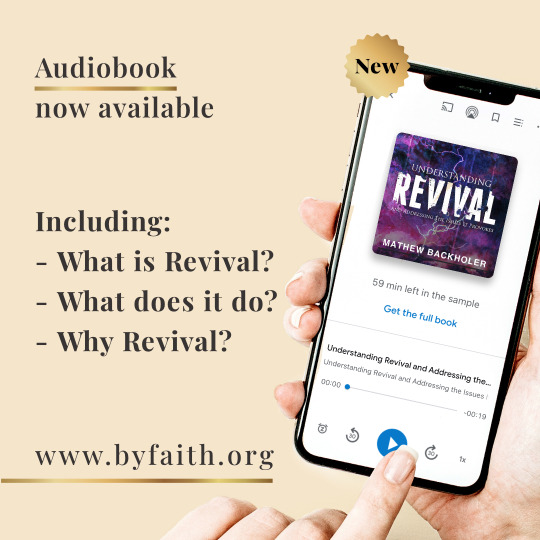
#AsburyRevival#UnderstandingRevival#Revival#ChristianRevival#TrueandFalseRevival#RevivalHistorian#Revivalist#MathewBackholer#Jesus#God#GooglePlay#ChristianAudioBooks#AudioBookWorm#AudioBookClub#AudioBookLover#AudioBooksofInstagram#AudioBookstagram#AudioBooks#Audiobook#Manifestations#Divine#Phenomena#ShekinahGlory#HolySpirit#ChristianAuthor#ByFaith#ByFaithMedia#ChristianLiterature#ChristianBooks#Backholer
2 notes
·
View notes
Text
Therasia: Minoan Goddess of the Sun, Fire, and Daytime Sky
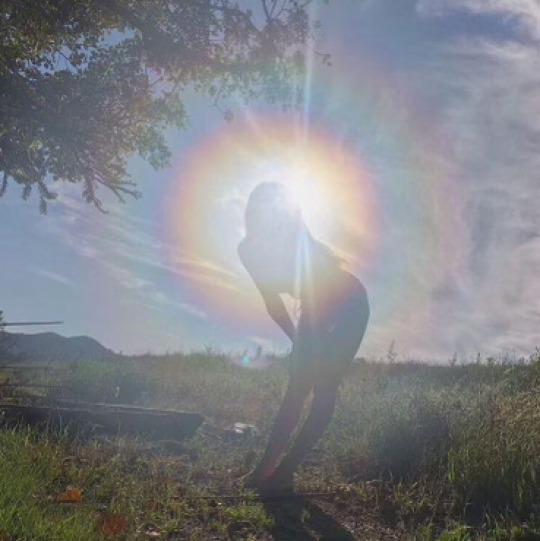
Who Is She?
Within the Modern Minoan Path (MMP), Therasia is one of the Three Mothers at the top of the pantheon. The Three Mothers are split into a triplicity: sky, land and sea. Therasia represented the sky.
The Minoan civilization is largely a mystery to us because their language is still undeciphered! So how did we get to know about Therasia? Well, Linear A is undeciphered, but Linear B is readable. Linear B was a later version of Linear A, and an early ancestor of Ancient Greek, that gives us some insight.
“At Knossos [a large “city” of Crete which could have functioned something like a capitol if we use today’s thinking], in a LMIIIA context (14th century BC), seven Linear B texts while calling upon "all the gods" make sure to grant primacy to an elsewhere-unattested entity called qe-ra-si-ja and, once, qe-ra-si-jo. However this probably refers to a god or a person rather than to an island *Qherasia > Therasia.” Wikipedia.
How do we know there even was a Sun Goddess? Well, unexpectedly, one of the biggest sources the MMP has drawn knowledge from has been folk dance/ethno-choreography from around the Aegean and eastern Mediterranean regions. Ethno-choreography is “not just the study or cataloguing of the thousands of external forms of dances—the dance moves, music, costumes, etc.— in various parts of the world, but the attempt to come to grips with dance as existing within the social events of a given community as well as within the cultural history of a community. Dance is not just a static representation of history, not just a repository of meaning, but a producer of meaning each time it is produced—not just a living mirror of a culture, but a shaping part of culture, a power within the culture:
“The power of dance rests in acts of performance by dancers and spectators alike, in the process of making sense of dance… and in linking dance experience to other sets of ideas and social experiences”.” Wikipedia https://en.wikipedia.org/wiki/Ethnochoreology
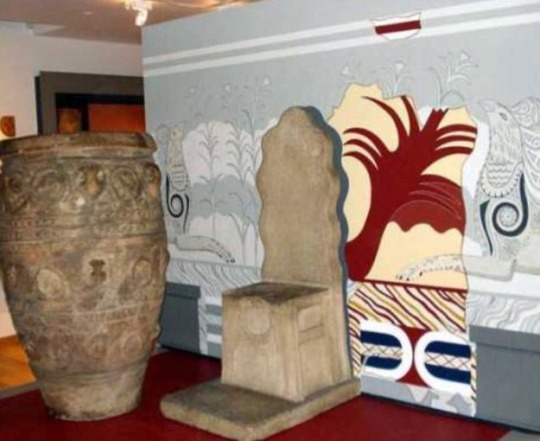
In many of these dances, there is honoring and implication of a Sun Goddess. In Knossos, there is a throne room just off the temple complex’s courtyard that implies this Goddess. A sun rising over the double-peaked sacred summit of Mt. Juktas flanked by palm trees and griffins, both things believed throughout the Mediterranean to be symbols of an ancient Sun Goddess. So whatever she might have been called in their native tongue, this Sun Goddess was obviously a sacred part of their religious practices.
These pieces of evidence and a collection of shared gnosis has led to the MMP understanding of Therasia.
How Therasia Differs From Other Sun Deity Traditions
We are used to thinking of the Sun as a masculine force in Hellenism and Wicca. However, before the Bronze Age Collapse, it seems the opposite was the norm. The Sun was a radiant woman, re-birthing herself yearly at the winter solstice. Personal experience and some shared gnosis has told me that while the Sun is a large part of her, she is not just this. She is the daytime sky, whether it is sunny with blue skies or dark and stormy. Rain, too, is her (though she shares this with the Serpent Mother). The nighttime sky, however, is our lady of stars Ourania. She may have also been regarded as the harbinger of the seasons. Many have encountered her as a powerful first contact when approaching Minoan spirituality.
While family trees are convenient and appealing in pantheons, as MMP founder Laura Perry puts it, the Minoan pantheon is more akin to a circus house of fun mirrors. However, Therasia is considered in MMP as the mother of Korydallos, god of joy, dance and humor, and Arachne, goddess of fate. Therasia and Korydallos may have been worshipped in a pair as Thumia and Kaulo in the form of hummingbird-lovers. (Mother-Son relationships among the gods was not considered incest, just a deity-thang).
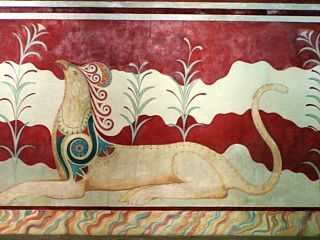
Eruption on Therasia
If you googled Therasia, you would find the island Therasia, the second largest island in the volcanic island group of Santorini in the Greek Cyclades. What are now the two islands, Therasia and Thera, was once one island, split by a volcanic eruption known as the Thera Eruption or the Minoan Eruption. I talk about the Thera Eruption because it was a contributing factor to the decline of Minoan Crete. Many palaces and coastal areas were destroyed. At the same time, there is evidence of invasion from Mycenaeans. It is also possible that the eruption spawned tsunamis which further decimated the island.
“The Minoan eruption was a major catastrophic volcanic eruption that devastated the Aegean island of Thera (also called Santorini) in around 1600 BCE. It destroyed the Minoan settlement at Akrotiri, as well as communities and agricultural areas on nearby islands and the coast of Crete with subsequent earthquakes and tsunamis… the eruption was one of the largest volcanic events on Earth in human history.
Although there are no clear ancient records of the eruption, its plume and volcanic lightning may have been described in the Egyptian Tempest Stele, and the ensuing volcanic winter coincides with a cold wave mentioned in the Chinese Bamboo Annals. Since tephra from the Minoan eruption serves as a marker horizon in nearly all archaeological sites in the Eastern Mediterranean, its precise date is of high importance and has been fiercely debated among archaeologists and volcanologists for decades, without coming to a definite conclusion.” Wikipedia https://en.wikipedia.org/wiki/Minoan_eruption
In the aftermath, I would be fascinated to know what myths the surviving Minoan people told to explain the series of tragedies and whether Therasia was any part of it as the namesake of the island that erupted. Especially since, allegedly, the eruption affected the coloration of the sunsets for three whole years. Additionally, some people think that this tragedy might have contributed to the myth of Atlantis.
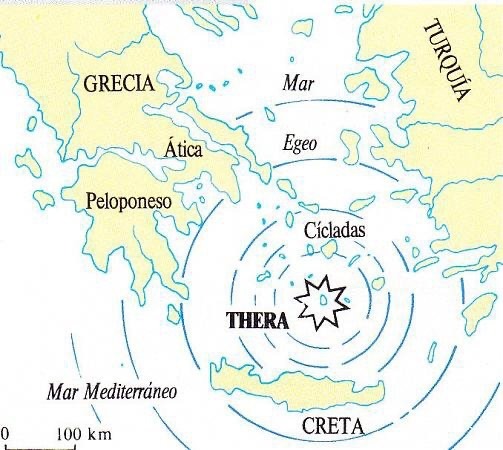
Associations:
☀️The Sun
☀️The Sun Wheel*
*(A perverted version of this symbol has been appropriated by Nazis so please be wary. It is still a sacred symbol but not all who use it use it in its original context. The Minoans were far from Aryan and have no support for the ideals of Nazism).
☀️Dates
☀️Date Palm Trees
☀️Griffins
☀️The Pillar, Pillar Imagery
☀️Figure of Eight Shields
☀️The Color Known As Phoenician Red/Tyrian Purple
☀️Yellow
☀️Saffron
☀️Sundays
☀️Electricity (a friend’s upg)
Ideas For Worship:
☀️Expanding your worldview
☀️Inspiration and creativity
☀️Connecting with the divine feminine
☀️Renewing your youthful spirit, as She does every winter solstice
☀️Fueling your inner strength and resilience
☀️Anything that needs passion, creativity, and/or vital energy
Ideas For Offerings:
☀️Water
☀️Fire
☀️Oil
☀️Honey
☀️Dates
☀️Figs
☀️Bread
☀️Milk
☀️”Scipy” scents (Cinnamon, ginger, frankincense)
☀️Relevant Imagery
☀️A Labrys
Divination:
I have found her to be open to tarot and pendulum; however, tarot wasn’t a favorite. Fire-based divination is a great fit. According to others I talk to, apparently any divination which involves reflection, reflection of the sun, is good to Her. White stones also seem to be a favorite for Her in the sense of geomancy/lithomancy or just as cult objects. One of the tarot cards I have come to associate with Her is the Page of Wands. I personally have a mirror dedicated to her from which I have received messages.

Devotional Poem
Fire of heaven,
Sun-mother,
Shine your radiance upon me.
As your power moves my spirit,
So your brilliance fills my heart
And warms me to my core.
Help me to stay seated in
The strength and passion
That is your gift to us
And to remember that
Your light shines within me, always.
- Laura Perry
☀️☀️☀️☀️☀️

Sources:
https://witchesandpagans.com/pagan-paths-blogs/the-minoan-path/the-minoan-sun-goddess-hail-therasia.html
https://en.wikipedia.org/wiki/Ethnochoreology
https://en.wikipedia.org/wiki/Minoan_eruption
https://www.livescience.com/4846-eruption-thera-changed-world.html
#therasia#minoan#mmp#sun goddess#bronze age#paganism#revivalist#deity#meet the minoans#sun#daytime#sky#sky goddess#divine feminine#griffin#saffron#the three mothers#minoan mothers#fire goddess#knossos#crete#ancient crete#cretan#ancient religions
10 notes
·
View notes
Text
"There are a lot of Christians who are halfway fellows. They stand in the door, holding on to the Church with one hand while they play with the toys of the world with the other. They are in the doorway and we can't bring sinners in."

Mordecai Fowler Ham Jr., was an American Independent Baptist evangelist and temperance movement leader.
Born: 2 April 1877, Allen County, Kentucky, United States
Died: 1 November 1961, Louisville, Kentucky, United States
1)Revival Meetings: Mordecai Ham conducted numerous revival meetings throughout the United States, particularly in the Southern states, during the first half of the 20th century. These meetings were characterized by fervent preaching, emotional worship, and a focus on personal salvation.
2) Famous Convert: Billy Graham: One of the most notable aspects of Mordecai Ham's legacy is his influence on a young Billy Graham. In 1934, Billy Graham attended one of Ham's revival meetings in Charlotte, North Carolina, and made a commitment to Christianity during that event. This encounter played a pivotal role in shaping Graham's future as one of the most well-known Christian evangelists in the world.
3) Controversial Methods: Ham was known for using strong and controversial language during his sermons. His preaching style was passionate and sometimes fiery, which led to both acclaim and criticism. Despite the controversy, his charismatic approach drew large crowds to his revival meetings.
4) Educational Background: Mordecai Ham attended Wake Forest College (now Wake Forest University) in North Carolina. He initially aspired to become a lawyer but later felt a calling to Christian ministry, leading to his decision to become an evangelist.
5) Later Years: After several decades of active evangelism, Ham continued to be involved in ministry and preaching into his later years. He passed away in 1961. While he may not be as widely known as some other evangelists, his impact on individuals like Billy Graham and his contributions to the evangelical movement have left a lasting legacy.
#quoteoftheday#today on tumblr#MordecaiHam#Evangelist#Revivalist#Christianity#BillyGraham#ReligiousLeader#Faith#Gospel#Sermons#ChristianMinistry#Preacher#Spirituality#ReligiousLegacy#ChristianRevival#GospelPreaching#FaithfulLife#HistoricalEvangelist#ChristianInfluence#ChurchHistory#LegacyOfFaith
0 notes
Photo

#interiordesign #interiorstyling #mydesign #revivalist #albertassefi #saintalbertjune (at Tehran, Iran) https://www.instagram.com/p/CffmaHbIrlU/?igshid=NGJjMDIxMWI=
1 note
·
View note
Text
Pawbrick is game crated by amateur historical archivalists/revivalists built using ancient technology emulation. Created using archaic and counterintuitive manipulation of radiants and elements combined using theories and off-the-record research gleamed by Professor Dally and pieced together and brought to the light of day together by the persistent questioning, prodding, badgering and sometimes hijinks of his students.
Using ancient houm terminology, Pawbrick is an “open source” “open world” “MMO” “videogame” where players use electrical force to power micro machines integrated into elaborate systems known as “computers” that create a simulation of imagination that many players can participate in at once. This is similar to dreem or projection except it is experienced second hand using primary physical senses. The rules of the world and simulation of forces and nature are predetermined by the game, those who have tried the construction say it’s like “playing a book or story.” It is becoming very popular among teenagers. The youth’s elders, Millstone, Gubernat, abd Prem are not sure where to classify the experience and it’s benefit or harm on youth is yet to be determined.
#Pawbrick#computer#revivalist#archivalist#emulation#radiants#Dally#electrical force#projection#dreem#physical senses#forces#elders#teenagers#youths#Millstone#Gubernat#Prem#Cuspid#The Wisdom
0 notes
Text
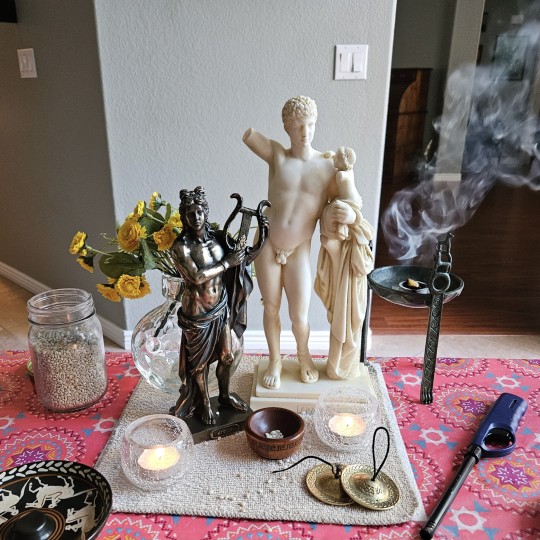

Tending the dining room altar. :)
#Meleagros’s#Hermes#Hermes deity#Apollo#Apollo deity#The Mousai#The Muses#Greek gods#Greek god#Greek goddesses#Greek goddess#Hellenic polytheism#Hellenic polytheist#Hellenic paganism#Hellenic pagan#Hellenic reconstructionism#Hellenic reconstructionist#Hellenic revivalism#Hellenic revivalist#Helpol
399 notes
·
View notes
Note
you single handedly revived klance
omg hahahaha THANK YOU i definitely can't in good conscious take all the credit but if u say so......
79 notes
·
View notes
Photo


(10-12-2022 my chemical romance at the forum, los angeles, ca)
16 notes
·
View notes
Text
How do I explain that while—yes—Greeks do exist, the vast majority (and of course I’m including the diaspora) either (a) don’t care about, or (b) even know modern Hellenic polytheism is practiced today.
I agree with the base sentiment that “when engaging with Greek culture (ancient or modern), it is good to be aware of + respectful towards Greek people.” That’s awesome! 👍🏻 It's so awesome that I encourage applying this same sentiment to all other cultures you’re able / invited to engage with! :)
That same base sentiment can be and has been twisted into a pretzel and salted with straight-up ethnonationalism, though.
Be aware of + respectful towards Greeks when engaging with Greek culture. But also be aware of the fact that there are ethnonationalists running in Hellenic polytheist spaces.
They will twist seemingly innocuous ideas in order to declare indigeneity and primacy over Greek culture. They will deny Greeks their ethnicity because—according to them—“true Greeks can’t be Christian/Muslim/Jewish/mixed/etc.” And they will deny non-Greeks the opportunity to engage with the culture, especially if it’s in a way that even slightly diverges from their very sad idea of ““““true”””” Hellenism.
Being aware and informed goes hand-in-hand with being respectful.
#highropoios posts#Helpol#Hellenic polytheist#Hellenic polytheism#Hellenic pagan#Hellenic paganism#Hellenic reconstructionist#Hellenic reconstructionism#Hellenic revivalist#Hellenic revivalism#Hellenic culture#Greek culture#Hellenism#Hellenismos
354 notes
·
View notes
Photo
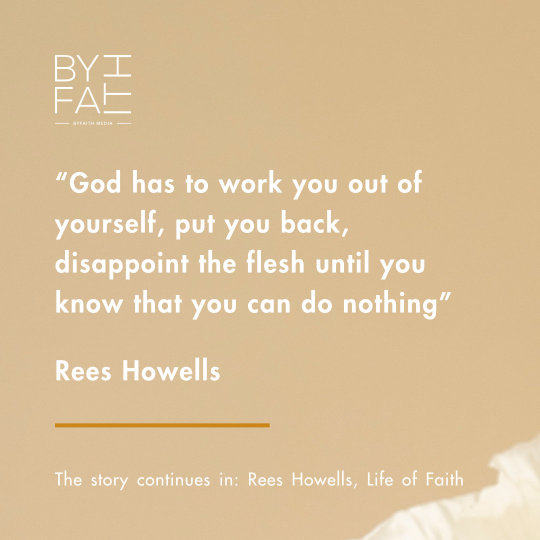
This 🙌🏻
Read More: https://byfaith.org/product/rees-howells-life-of-faith-intercession-
#Revivalist#ChristianRevival#IcandonothingwithoutGod#HolySpirit#IneedGod#God#Jesus#faithingod#BeliveinGod#HolyGhost#ChristianTeaching#ChristianPrinciples#Testimony#BookRecommendations#ByFaithMedia#ReesHowellsStudy#ChristianBook#ChristianAuthor#BibleCollegeofWales#Backholer#SpiritualWarfare#Intercessor#Intercession#Intercede#MathewBackholer#GodChallengestheDictators#LifeofFaith#ReesHowells#ReesHowellsLifeofFaith#ReesHowellsIntercessor
3 notes
·
View notes
Text

Edward John Poynter (English, The Siren • 1864 • Private collection
#victorian neoclassical#art#painting#fine art#art history#women in paintings#mythological painting#edward john poynter#british painter#olympian classical revivalist painter#19th century art#portrait#paintings of women
70 notes
·
View notes
Text
"religion has done this to me and i think religion is good for these things and bad for other things" *is specifically talking about christianity*
#annoying ass tbh#esp as someone who studies and reads into non-western religions#and participates and is an enthusiast of revivalist polytheist bisaya and tagalog religions
32 notes
·
View notes
Photo

tmnt au doodlz
#tmnt au#did I give my April creepyyeha gear?#yes absolutely I fucking did#if you feel personally attacked by the outfits I gave Keno April and Jennika?#good#deLiA*s closet sends its regards#just out here picking off other elder millenials from the most unexpected sniper points#be thankful I didn't put her in jnco jeans#this close to putting Leo in the Hot Topic blue flame anime pop button polo shirt#iykyk#fuck it I'll do it because i am untamed and unstoppable#I have adult money now#but I am NOT paying the 90s revivalist kids 45#for a babydoll tee that cost 6.99 in 96 on DePop#do I still kick myself for throwing out a big chunk of my closet once I graduated high school?#every time I see a Lisa Loeb fucking baby doll dress being sold as vintage 90s for FIFTY FIVE DOLLARS#granted the condition is great but I remember that shit being sold for 10 at Red Seagull#my tmnt au is also just an excuse to draw them in the clothes I wished I could wear when I was their age#TMNT is is technically only 2 years older than I am#give or take you go by their comic or cartoon debuts#they'll always be the cooler older kids to me
226 notes
·
View notes